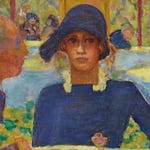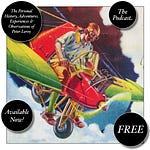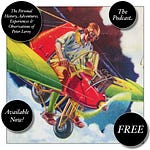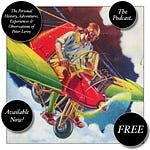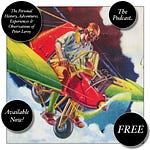31
FOR THE NEXT FEW MONTHS, life was a fantasy. Nearly every Friday I would go to the Fine Arts Theater with the girls. There I would eat éclairs and practice drinking my coffee black, the three of us sitting at a little table in a corner of the lobby, chatting like young flâneurs. When the lights dimmed, we would take our seats in the theater, and then, in the dark, I would watch a movie, sitting with a Glynn on either side, snug as the filling in a sandwich, and allow the movie to alter my definitions of the world, of war, of life, love, and, of course, dust.
When the movie ended, we would walk home together through nighttime Babbington. On those walks, we rarely talked about the movie we’d seen, because the things we saw in those movies were so far removed from what we had experienced in life that we didn’t know what to say and even if we had known what to say we wouldn’t have had the vocabulary to say it, which is to say that the words we might have used had meanings limited by our experiential frame of reference; they did not yet possess the breadth, depth, and richness that they would have needed to do justice to what we had seen on the screen. We could have talked about what the movie “meant to us,” or how the movie “made us feel,” or what we thought the movie was “trying to say,” as we were always asked to do after reading a book in school, but we would have been talking less about the movie than about ourselves, and that was another matter. When we talked about ourselves, we had our own fantastic experiences to explore, and for those explorations, we were developing a rich vocabulary of our own, a vocabulary in which there were new meanings for simple words, such as peas and, of course, dust.
In an earlier draft of this book, I included here a passage that, later, upon reflection, I decided I should probably delete:
Though we didn’t talk much about a movie after we had seen it, we would often take parts in an extension of it. Walking along Main Street, we would become for a while the characters we’d been watching in the Fine Arts Theater. We would stay in character for the length of Main Street, but when we came to the park we would slip out of the parts we had assumed and put them aside.
Years earlier I had begun to recognize the pleasure of playing a part, becoming someone else for a while, escaping my own thoughts and circumstances, stepping, at least for a moment, beyond the limits of my life and the limitations of my self, when, at bedtime, as I slipped into sleep, I began slipping into the character of Larry Peters, boy hero of a series of books that I read repeatedly.
Even I—and even at that time, so early in life—could understand what was so attractive about becoming Larry Peters for a while. He had an interesting family and an interesting life, both much more amusing and exciting than mine. It was quite natural to want to be him. The attraction of the characters I saw in films at the Fine Arts Theater was not so obvious. In fact, it puzzled me even as I succumbed to it. I found myself slipping into the parts of characters, many of whom, if they had been people instead of characters, would have been people I would never have wanted to be, living lives that I would never have wanted to live. Nonetheless, I enjoyed pretending to be them for a while. Why? During my walks with the Glynn twins, I wondered about that odd and possibly perverse pleasure, and I’ve wondered about it all over again while revisiting that time, and I’ve decided that there were two components to the pleasure I found in playing at being a character: otherness itself and the companionship of other characters.
The source of the first part of the pleasure, otherness itself, the simpler part, was the fact that simply not being Peter Leroy for a while had its attractions and its rewards. The pleasure of otherness could make me enjoy—it is the right word—assuming the problems of the characters I’d seen, horrible though they sometimes were, even feeling their pain, their worries, and their fears. After all, I could slip into the trying life of a movie character the way I could slip into the plaid jackets that caught my mother’s eye when she took me shopping for school clothes, jackets that I would try on to please her but that I would never want to wear, and certainly would never be caught dead wearing to school. I could regard myself in the jacket or the life of a character, grimace, and put it back on the rack. I didn’t intend to buy it, and I understood that I wasn’t going to have to wear it as I went through the trivial trials of my daily life.
(I’m grateful to my younger self for that understanding. I sometimes turn to it as evidence of my sanity, since the boy who understood it has become a man who slips in and out of the lives of the people he encounters as easily as he slips in and out of his favorite old black wool jacket, the one that Albertine keeps offering to discard. I find everyone irresistible in this respect: I want to live everyone’s life for a moment of mine, provided that I can put it back on the rack when I’ve decided that it isn’t what I want to wear forever. That includes your life, Reader. I want to poke around in your house, eat your food, sleep in your bed, weed your garden, repeat your anecdotes to your friends over dinner, and after dinner, sitting in your favorite chair, snug in your favorite jacket, pick up one of my books and read it as you would. I’m grateful to my younger self for pointing out to me that this is not an illness, but a game, the harmless pastime of a literary chameleon.)
The source of the second part of the pleasure, the companionship of other characters, the sweeter part, came from the twins, who played counterparts, correlatives to mine, so that on our walks I discovered the girls anew each time, in another cinematic transformation.
I recall that all the movies the girls and I saw included in the plot a love triangle, a folie à trois, or ménage à trois, but I know, or think I know, that it cannot be true that all the movies the girls and I saw included in the plot a love triangle, a folie à trois, or ménage à trois, can it? Certainly not. I must be projecting my own little self and Margot and Martha onto the silver screen of my memory, cinematicizing us—and yet, it seems to me that every one of the movies we saw did have a trio like ours in it—older, of course, and European, since these were art films—but, still, a trio: two women and a man, their lover. Rocky, Lulu, Lola. Cliff, Yvonne, Yvette. Dirk, Lily, Millie. Somewhere between the time I’m recalling and now, the time when I’m recalling it, the process began working backward. As a boy, I had made myself into a character; now I am making a character out of myself.
[to be continued]
Have you missed an episode or two or several?
You can begin reading at the beginning or you can catch up by visiting the archive or consulting the index to the Topical Guide. The Substack serialization of Little Follies begins here; Herb ’n’ Lorna begins here; Reservations Recommended begins here; Where Do You Stop? begins here; What a Piece of Work I Am begins here; At Home with the Glynns begins here.
You can listen to the episodes on the Personal History podcast. Begin at the beginning or scroll through the episodes to find what you’ve missed. The Substack podcast reading of Little Follies begins here; Herb ’n’ Lorna begins here; Reservations Recommended begins here; Where Do You Stop? begins here; What a Piece of Work I Am begins here; At Home with the Glynns begins here.
You can listen to “My Mother Takes a Tumble” and “Do Clams Bite?” complete and uninterrupted as audiobooks through YouTube.
You can ensure that you never miss a future issue by getting a free subscription. (You can help support the work by choosing a paid subscription instead.)
At Apple Books you can download free eBooks of Little Follies, Herb ’n’ Lorna, Reservations Recommended, and Where Do You Stop? and What a Piece of Work I Am.
You’ll find overviews of the entire work in An Introduction to The Personal History, Adventures, Experiences & Observations of Peter Leroy (a pdf document), The Origin Story (here on substack), Between the Lines (a video, here on Substack), and at Encyclopedia.com.





